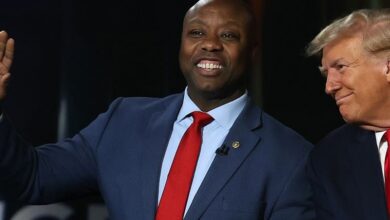The Seven Archetypes Of Leadership And How Entrepreneurs Become CEOs

Transitions ahead.
Ask any MBA and they’ll be able to trace the twists and turns of the corporate maturity curve with blindfolds on.
Ask them to describe the inflection points on their personal career trajectory from entrepreneurs to CEOs and you’ll be facing a fair share of blank stares.
In our efforts to raise future leaders who will carry our economy forward, we’re rightfully solving for the company and its wellbeing. In our emphasis on the analytical and transactional, we often overlook the importance of personal growth to the great detriment of those who will end up leading our corporations.
Based on what we know today, whole-person growth and self-reflection are among the most powerful drivers of success in leadership development.
The journey entrepreneurs take embodies ample opportunities for both, and all a leader that is motivated to grow needs is a North Star to navigate to.
One framework that provides just that is the Seven Archetypes of Leadership model that can help you in setting goals and self-reflecting as you grow with your company.
Leaders and Their Companies Are On A Shared Journey Of Growth
Leaders don’t simply grow; they co-evolve with their companies.
As the company grows in complexity, so does the list of desired skills it imposes on its leadership, requiring them to flex new skills and approaches at consistent intervals.
The process of reinventing oneself can be painful. No other role requires incumbents to so drastically change their behavior and competencies, often without any clear signposts or external support.
For most leaders who are nearing an inflection point, the only signal they get is a creeping feeling that the company needs something that they cannot provide.
Listening to this feeling instead of dismissing it is of paramount importance. Equally important is realizing that often the right way to address it is by becoming a kind of leader yourself.
McKinsey’s research found that CEOs taking on new roles often find success by dedicating the first six to 12 months on personal growth and organizational transitions. Listening intently to your organization, your staff as well as to your own emotions and reactions is key, and knowing which ‘big question’ to prioritize is essential.
Knowing what your company needs from you today is not enough, however. A leader’s task is to chart a path to the future, which necessitates knowing where the ship is heading.
While every journey of growth that a leader and their company shares is unique, there are seven archetypes that arise at key inflection points within the Seven Archetypes of Leadership model.
As you read through the below, reflect on what archetype you most strongly identify with today. Is that the leader your company most desperately needs?
If not, which archetype is your company calling for, and what do you need to do to embody it to its fullest?
The Seven Archetypes of Leadership
The Bootstrapper
At the inception of a company, most leaders take on the role of the Bootstrapper. This leader is resourceful to the point of scrappiness, willing to wear every hat required to make the company survive another week. The Bootstrapper either thrives in environments of uncertainty or quickly learns to tolerate them, and their main task is to manifest the company’s future by means of sheer determination and creativity. This is the playground of the entrepreneur and their teams filled with ninjas and rockstars.
“At the beginning of the company you need scrappier processes and an entirely different mentality than later on,” Mike and Aaron Hall, the co-founding brothers behind Anza Renewables noted during our discussion on the move from an entrepreneur to a CEO.
“It’s not a binary switch that one turns on or off. There’s a leadership spectrum that starts with the bootstrapping entrepreneur and grows into different roles and requirements based on what the company needs,” they added in retrospect of their tenure at the helm of the solar power and storage procurement facilitator.
The Salesperson
As the company begins to gain traction and the most critical life-sustaining logistics have been delegated to new hires, many leaders find themselves taking on aspects of the Salesperson archetype. This leader excels at building relationships, selling the vision, and driving revenue growth either by sheer tenacity or charismatic ability. Their main task is to connect with customers and stakeholders in order to establish a fully fleshed out product-market-fit and to carve out a decisive market presence.
The Problem Solver
The Problem Solver is a leader who is called into service at a time of great need for clarity and decisiveness. Over time, a company is bound to encounter several existential crises, each requiring strategic overhauls and on-demand pivots. Extraordinary times require extraordinary leadership, and the Problem Solver embraces their analytical, pragmatic and decisive nature to chart a path forward. For many entrepreneurs, this is the first archetype that truly pushes them to their limits. Maturity and past experiences help navigate the demands imposed on the Problem Solver, and many lean on support from their networks and external advisors.
For a growing number of leaders, this is the time when they get serious about their personal growth and mentorship. “Being a CEO is one of toughest jobs one can have. Seeking help used to be a taboo, but thankfully we’re seeing a growing number of CEOs enter into mentorship and coaching relationships. Boards have had a big part to play in this, and we often see CEOs being encouraged to get external support for their leadership growth, particularly when being called into the role of a problem solver,” Constantine Alexandrakis, CEO of Russell Reynolds Associates, noted during our recent discussion on the firm’s new approach to leadership growth and executive mentoring.
The Stabilizer
A natural counterpart to the above is the Stabilizer. After each storm a moment of reprieve arises, which presents opportunities for triage, consolidation and compression. The Stabilizer focuses on efficiency, optimization and profitability in order to maintain what has been achieved and to set sustainable trajectories for future growth. Entrepreneurs who have nurtured their companies from Day One often find the role of the Stabilizer particularly difficult. Cutting costs, letting go of friends and rethinking runways are unsavory tasks, let alone for those who have built it all from the ground up themselves.
The Visionary
As companies mature and there are more hands on deck to weather small storms, an inflection point that calls for the Visionary opens up. This leader gazes boldly beyond the horizon and builds narratives and inroads to a long-term future. Visionaries live and die with inspiration, creativity and innovation, and they need to find ways to unshackle themselves from what moors the company down to its foundations today. Becoming a version of Steve Jobs on call isn’t easy, particularly when the day-to-day demands of the role keeps your mind fully occupied. Finding the time to detach is often harder than it seems.
The Great Facilitator
As the company continues to scale, they start calling for an archetype that is closer to a CEO than an entrepreneur. The Great Facilitator’s role is one of empowerment and efficiency, and the focus is less on personal impact and more on what your team can accomplish. These leaders focus on enablement and organizational cultures, and their main currencies are efficiency, collaboration and trust. Taking on the role of the Great Facilitator requires loosening the reins and handing over control to others, a task which many entrepreneurs might find difficult to do particularly if they are called to this role shortly after being the Bootstrapper.
“Once the company grows to 200 people or more, the CEOs job becomes HR. You need to learn to accomplish more through others than on your own, and setting the right culture by example and leadership is the main task,” Mike and Aaron Hall reflected.
The Change Agent
Finally, we arrive at the Change Agent. This leader is called to the helm when the other archetypes have exhausted their toolkits. Change Agents are summoned to shepherd the organization safely through large-scale transformations and processes of change that reposition and realign the company for the future. This role often entails letting go of one or more facets of the company, be it tangible departments or previous visions and operating models. As such, Change Agents benefit from the ability to focus on the company’s well being and culture instead of its mere continuity, calling for a human-centered approach and an ability to see beyond the status quo.
“My career has been a series of S-curves,” Debashis Chatterjee, CEO at LTIMindtree, reminisced about his career that has taken him from the helm of several large-scale companies to his current role leading a publicly listed global IT services company.
“I’ve carried many roles and embodied the DNA of many types of leadership styles during my time. During periods of intense change I have always kept the human aspect of our work at the center. Ultimately, our clients and their experience is what matters the most. It’s my job to keep our organization poised to bring out the best of my staff so that they can focus on serving our clients.”
As with leadership overall, the Seven Archetypes of Leadership model is more art than it is science. However we categorize the different types of leadership, there is no avoiding the fact that each leader will face a series of inflection points that are as much challenges as they are invitations to grow.
Embracing these inflection points as an opportunity to evolve into a better version of yourself as a leader is what sets long-lasting successes apart from the rest.


